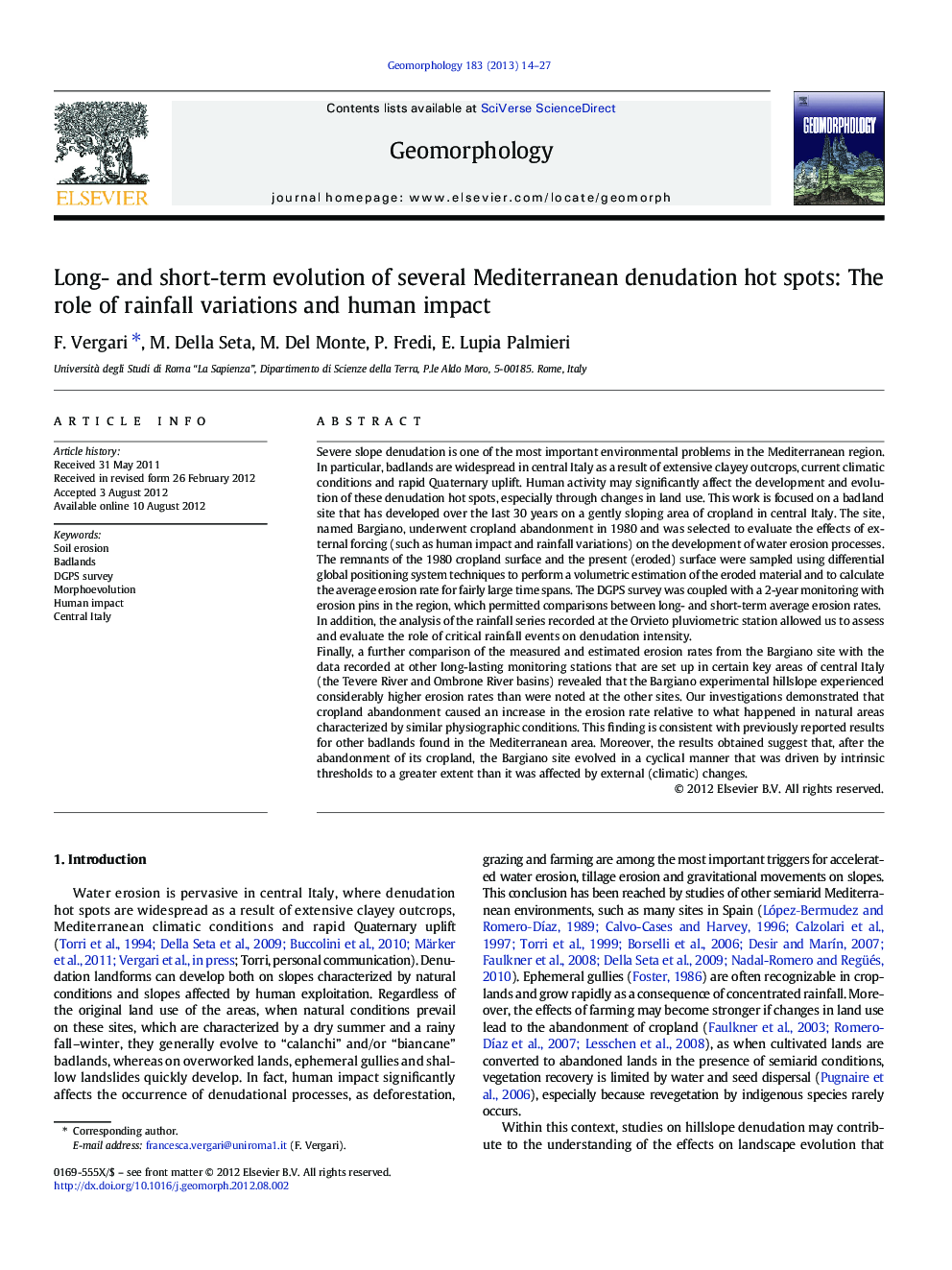| Article ID | Journal | Published Year | Pages | File Type |
|---|---|---|---|---|
| 4684970 | Geomorphology | 2013 | 14 Pages |
Severe slope denudation is one of the most important environmental problems in the Mediterranean region. In particular, badlands are widespread in central Italy as a result of extensive clayey outcrops, current climatic conditions and rapid Quaternary uplift. Human activity may significantly affect the development and evolution of these denudation hot spots, especially through changes in land use. This work is focused on a badland site that has developed over the last 30 years on a gently sloping area of cropland in central Italy. The site, named Bargiano, underwent cropland abandonment in 1980 and was selected to evaluate the effects of external forcing (such as human impact and rainfall variations) on the development of water erosion processes. The remnants of the 1980 cropland surface and the present (eroded) surface were sampled using differential global positioning system techniques to perform a volumetric estimation of the eroded material and to calculate the average erosion rate for fairly large time spans. The DGPS survey was coupled with a 2-year monitoring with erosion pins in the region, which permitted comparisons between long- and short-term average erosion rates.In addition, the analysis of the rainfall series recorded at the Orvieto pluviometric station allowed us to assess and evaluate the role of critical rainfall events on denudation intensity.Finally, a further comparison of the measured and estimated erosion rates from the Bargiano site with the data recorded at other long-lasting monitoring stations that are set up in certain key areas of central Italy (the Tevere River and Ombrone River basins) revealed that the Bargiano experimental hillslope experienced considerably higher erosion rates than were noted at the other sites. Our investigations demonstrated that cropland abandonment caused an increase in the erosion rate relative to what happened in natural areas characterized by similar physiographic conditions. This finding is consistent with previously reported results for other badlands found in the Mediterranean area. Moreover, the results obtained suggest that, after the abandonment of its cropland, the Bargiano site evolved in a cyclical manner that was driven by intrinsic thresholds to a greater extent than it was affected by external (climatic) changes.
